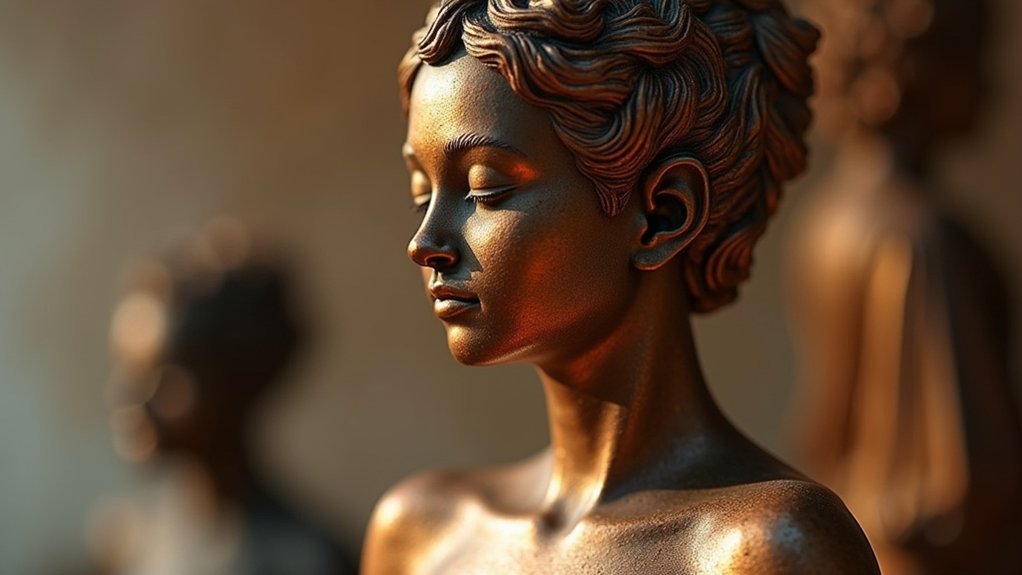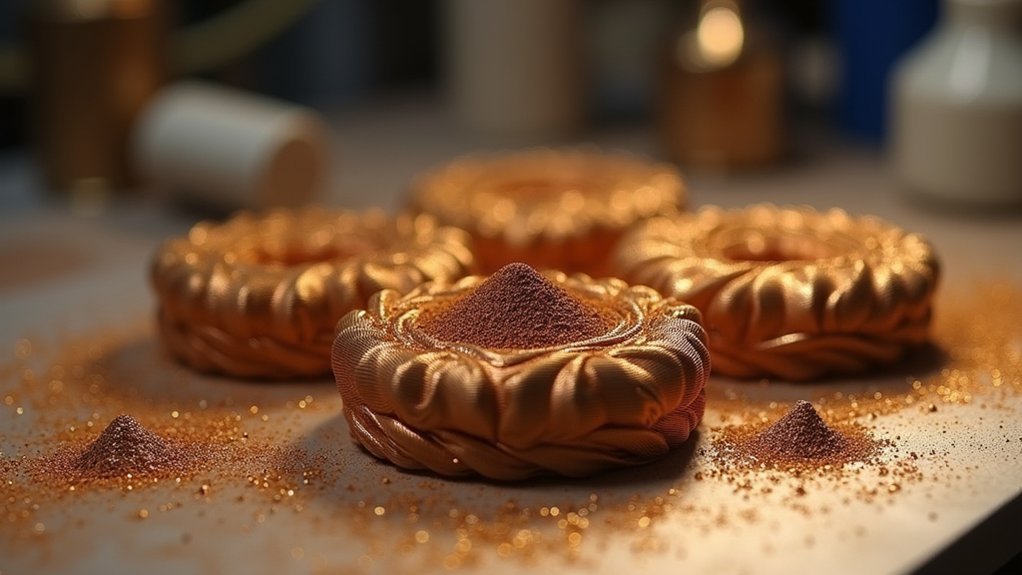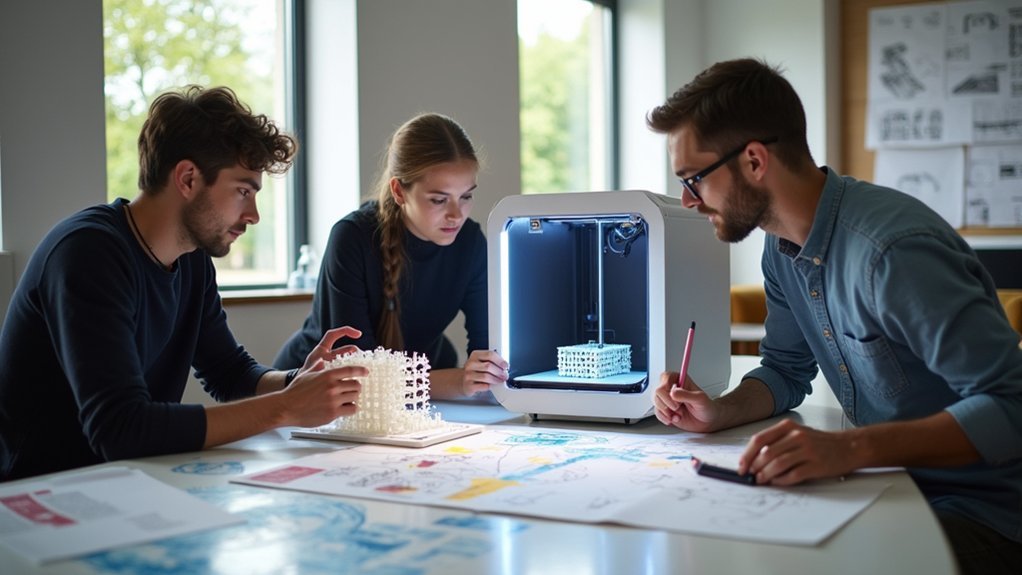You can elevate your 3D printing projects with bronze powder through three key applications. First, coat sculptures and figurines by mixing bronze powder with white glue, then burnish with steel wool for authentic cast bronze appearance. Second, use bronze-infused filaments that contain real bronze particles, creating heavier decorative objects with premium feel. Third, apply post-processing techniques like heat treating up to 175°C and chemical patina treatments. These methods will reveal professional-quality results that rival traditional metalworking.
Creating Artistic Sculptures and Figurines With Bronze Powder Coating

When you’re looking to elevate your 3D printed sculptures and figurines beyond basic plastic, bronze powder coating transforms ordinary prints into striking artistic pieces that rival traditional metalwork.
You’ll achieve a rich, metallic finish by mixing bronze powder with white glue and applying it directly to your model’s surface. This technique considerably increases your sculpture’s weight, adding authentic heft that enhances perceived value.
The burnishing process using fine steel wool creates a brilliant shine that accentuates intricate design details, making your finished piece virtually indistinguishable from cast bronze sculptures.
This open-source approach encourages experimentation within the maker community, allowing you to share techniques and results while developing your artistic skills through accessible, cost-effective methods.
Enhancing Jewelry and Decorative Objects Through Bronze-Infused Filaments
Bronze-infused filaments revolutionize jewelry creation by combining real bronze powder with printable materials, delivering the authentic weight and metallic luster that transforms your designs from simple plastic accessories into premium decorative pieces.
At 2.30 g/cc density, these filaments create substantially heavier objects than standard PLA, immediately enhancing perceived value.
You’ll achieve museum-quality results through strategic post-processing techniques:
- Polishing and heat treating – Creates shiny bronze surfaces with professional-grade finishes
- Wire brushing and rock tumbling – Develops unique textures and patinated effects for artistic variety
- Multiple finishing approaches – Allows customization matching personal styles and design preferences
Bronze-infused printing enables intricate jewelry designs that showcase metal’s aesthetic appeal while maintaining 3D printing’s flexibility, creating decorative objects that command attention in today’s competitive decorative arts market.
Post-Processing Techniques for Achieving Professional Bronze Finishes

While bronze-infused prints emerge from your 3D printer with distinctive metallic characteristics, they’ll require targeted post-processing to access their full professional potential.
Polishing stands as the primary technique for achieving laser-sintered finishes with exceptional shine. You can create rustic patinas through wire brushing, which exposes bronze particles for authentic weathered appearances.
Rock tumbling with steel shot delivers smooth, reflective surfaces perfect for decorative pieces. Heat treating at temperatures up to 175°C improves durability and shape retention, making prints suitable for demanding environments.
Like an honors graduate perfecting their craft, you’ll master combining techniques such as burnishing with steel wool followed by matte lacquer application for unique textures.
Apply specific chemicals to create defined patina effects that accentuate recessed areas, enhancing visual depth and character throughout your bronze creations.
Frequently Asked Questions
What’s the Best Software to Use for 3D Printing?
You’ll want Fusion 360 for CAD design and Ultimaker Cura for slicing. If you’re creating artistic pieces, Blender’s excellent. Beginners should start with Tinkercad, while Meshmixer helps repair files.
Can You 3D Print in Bronze?
You can 3D print bronze using specialized bronze-infused filaments containing real bronze powder. You’ll get metallic appearance and weight, then enhance the finish through post-processing like polishing and heat treating.
What Is the Most Common Application of 3D Printing?
You’ll find prototyping is 3D printing’s most common application. You can rapidly create functional models to test design concepts efficiently and cost-effectively, making it invaluable for product development across various industries.
How Do You Cast Bronze From a 3D Model?
You’ll 3D print a wax or polymer pattern, encase it in heat-resistant mold material, melt out the pattern, then pour molten bronze at 1,200°C into the cavity and let it cool.





Leave a Reply